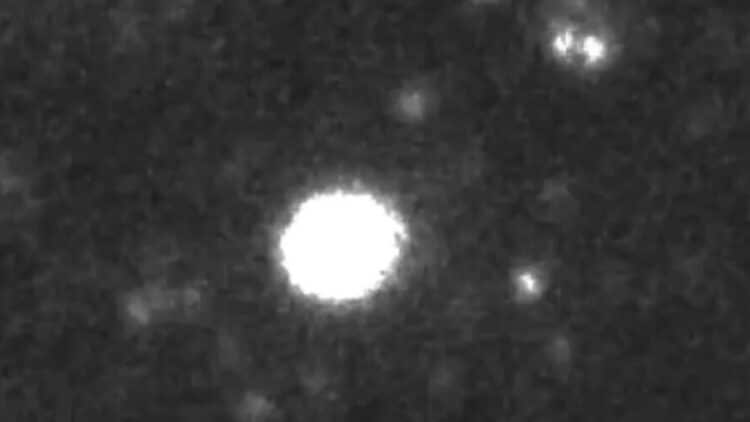Everyone knows that interstellar objects come and go, and usually don’t cause a stir. But now and then, something so unusual appears that it makes us rethink what we know about the cosmos. Such is the case with a new visitor that recently appeared in our skies: silent, swift, and unexpectedly discreet. At first, it seemed like just another comet, perhaps coming from another star system. But the more scientists observed, the stranger things became.
A comet that breaks the rules
When we observed this interstellar object, scientists expected the usual: a bright tail, spectroscopic signs of gas, or some dust trail. After all, that’s what we usually see in comets. But that wasn’t the case here.They already had some intriguing features that have been detected so far:
- No visible tail.
- No spectral gas lines.
- Reddish coloration, but static.
- No trace of carbon molecules.
This means we may not be dealing with a comet. The official explanation is that the object’s position and low dust emission explain the strange behavior. But this answer is far from convincing everyone. According to Dr. Avi Loeb, an astrophysicist at Harvard: “Could this object be something other than a comet? The spectroscopic data reported… does not show the features expected for atomic or molecular gas in a coma.”
Too close, too rare, too strange: could 3I/ATLAS be something artificial?
The name of the object that’s intriguing scientists is 3I/ATLAS. And it was the third interstellar object ever detected in our solar system. Well, if it were just the absence of a tail, that would be fine, but 3I/ATLAS’s orbital data is raising other eyebrows. This is because some studies already indicate:
- The chance of its trajectory being exactly in the plane of the ecliptic is only 0.2%.
- And the chance of it passing so close to Jupiter, Mars, and Venus is even smaller: 0.005%.
This would be unlikely in itself, but when we add this to the fact that objects like this should only appear once every 10,000 years, but we’ve already seen three in the last ten years… We might even consider it a coincidence, but everything indicates that it isn’t. It’s in this scenario that another question arises: what if 3I/ATLAS isn’t natural? Avi Loeb even rated the object a 6 on his “Loeb Scale,” which ranges from 0 (natural) to 10 (alien technology, like this alien spacecraft circling Earth). Of course, he’s not making any claims; he’s simply arguing that we should follow the data wherever it leads, even if the answers are uncomfortable.
A race against time: can we catch 3I/ATLAS before it vanishes forever?
3I/ATLAS is moving at 60 km per second and will soon leave the Solar System. The problem with this situation is that we don’t have enough time to build a mission from scratch. Therefore, astronomers have already put some ideas on the table, including:
- Using the Juno probe, which is already orbiting Jupiter. It could approach within 25 million km of the object in March 2026.
- ESA’s JUICE probe is also being considered, but it cannot alter its trajectory in time.
- Probes orbiting Mars may be well-positioned, but data on their fuel autonomy is lacking.
- Future mission: Comet Interceptor, scheduled for 2029, could pursue comets and interstellar objects as soon as they are detected. But it won’t arrive in time for 3I/ATLAS.
If Loeb’s team’s proposal is accepted, Juno could conduct the first field investigation of an interstellar visitor within this decade. This is a unique opportunity to closely study what could be a natural fragment or even something more. Just as NASA did when it sent the most important mission in history to a place in the Solar System that may harbor alien life.


